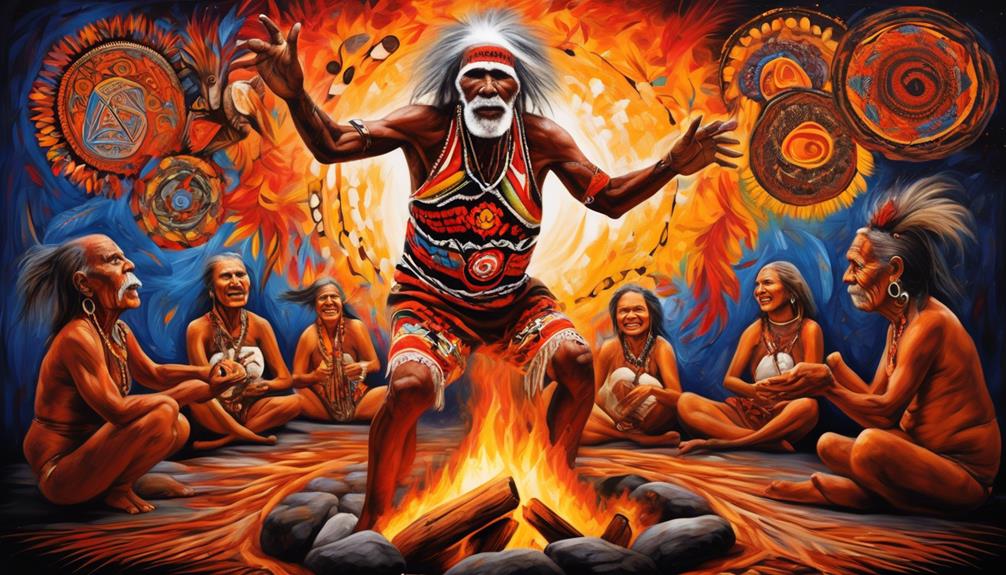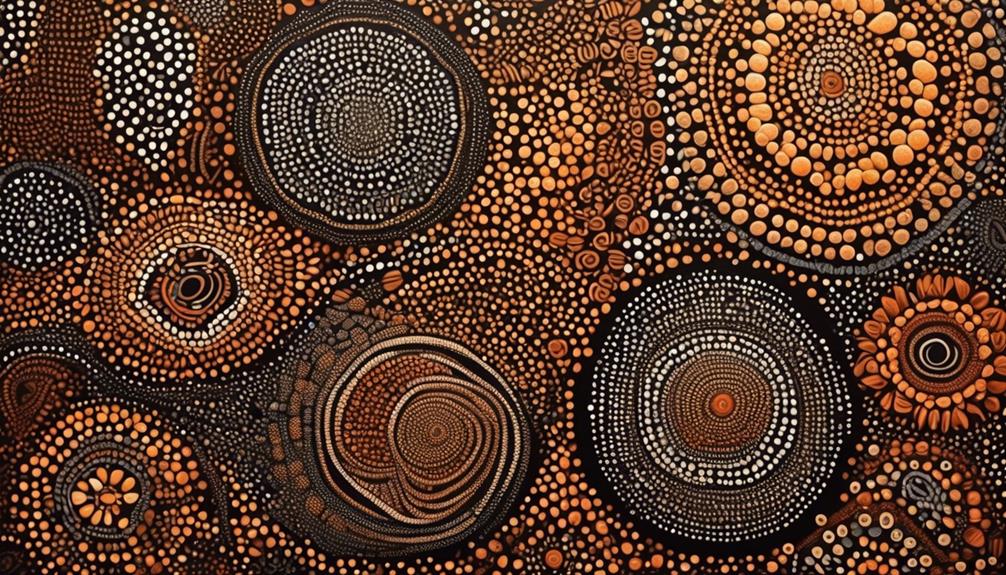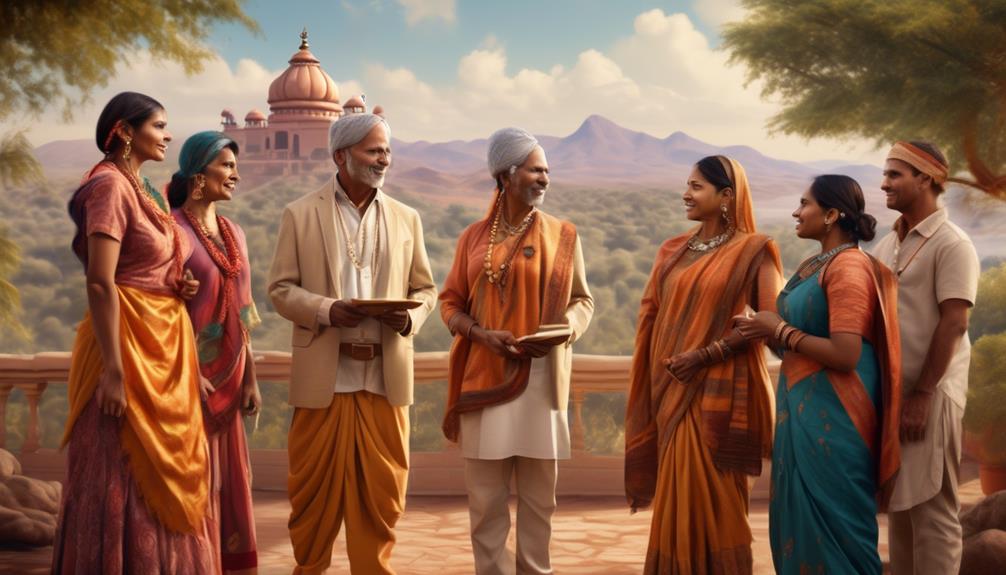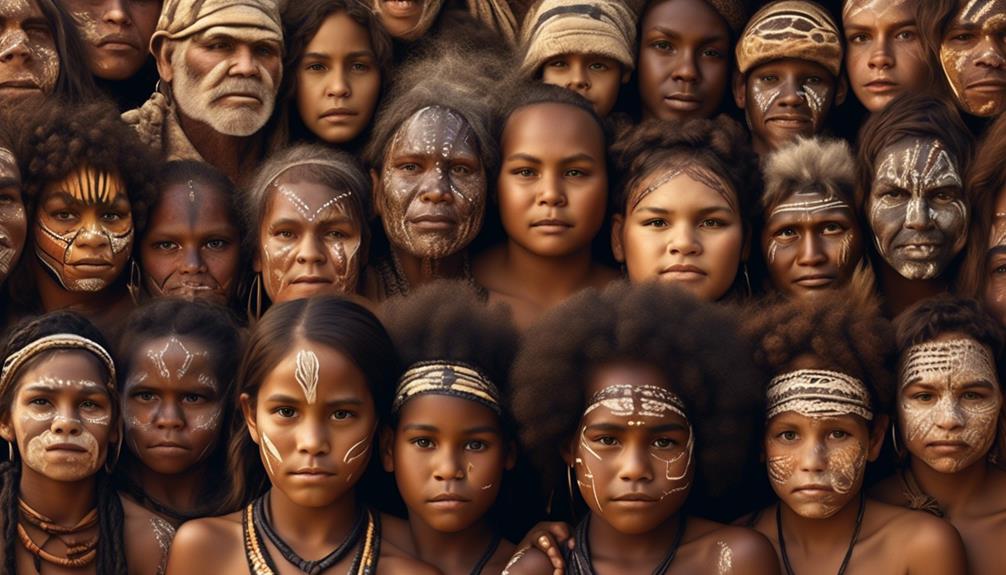We have all encountered situations where the term ‘aboriginal’ has sparked discussions and deep reflection. Whether regarding issues of land ownership, cultural identity, or official recognition, the concept of being aboriginal is complex and multi-faceted.
It's a term that carries significant weight and has far-reaching implications, not only for indigenous communities but also for national and international policies and perspectives. As we navigate through the intricacies of this definition, we begin to unravel the layers of history, identity, and the ongoing struggle for acknowledgment.
Key Takeaways
- Legal definitions of Indigenous identity vary between jurisdictions, resulting in inconsistencies and inequities.
- Advocating for inclusive legal definitions safeguards the rights and traditions of Indigenous communities.
- Global recognition of Indigenous rights is essential for acknowledging injustices and promoting justice and equality.
- Calls for restoration of autonomy and self-governance, protection of cultural heritage and sacred lands.
Historical Context
Examining the historical context reveals the complex and often tumultuous interactions between Aboriginal communities and colonial powers. The impact of colonialism on Aboriginal communities has been profound, leading to historical injustices that continue to reverberate through society today. Throughout history, Aboriginal communities have displayed remarkable resilience in the face of cultural oppression and forced assimilation. The preservation of their cultural heritage has been a source of strength and identity, contributing to the rich tapestry of human diversity.
The societal impact of historical injustices on Aboriginal communities can't be overstated. The legacy of colonization has resulted in systemic inequalities, disenfranchisement, and marginalization. However, despite these challenges, Aboriginal communities have demonstrated remarkable strength and resilience. Their ability to endure and overcome the trials of history speaks to the depth of their cultural roots and the power of community solidarity.
The struggle for cultural preservation has been intertwined with the broader fight for social justice and equality. The resilience of Aboriginal communities in the face of historical injustices serves as a testament to the enduring spirit of a people who've faced centuries of adversity. By understanding this historical context, we gain insight into the ongoing struggles and triumphs of Aboriginal communities, and we can work towards a more just and equitable future for all.
Indigenous Identity
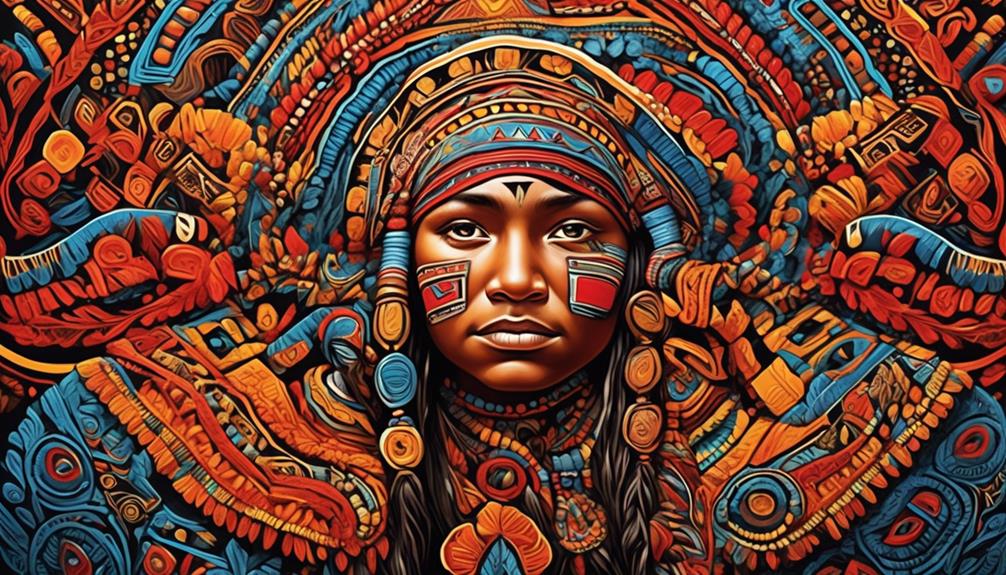
Indigenous identity is an integral part of the cultural tapestry that enriches our society, embodying a profound connection to history, heritage, and community. It is the thread that weaves together the diverse experiences and perspectives of Indigenous peoples, shaping their unique place in the world. When we consider Indigenous representation, it becomes apparent that the portrayal of Indigenous identity in media and popular culture often lacks authenticity and depth. This misrepresentation perpetuates harmful stereotypes and erases the rich tapestry of Indigenous cultures. On the other hand, initiatives that prioritize authentic Indigenous representation empower communities and foster understanding and respect.
| Challenges | Solutions |
|---|---|
| Misrepresentation in media | Authentic storytelling and diverse representation |
| Cultural appropriation | Collaboration and consent with Indigenous communities |
Cultural preservation is another essential aspect of Indigenous identity. The preservation of traditional practices, languages, and knowledge systems is crucial for maintaining the integrity and resilience of Indigenous cultures. Efforts to support cultural preservation, such as language revitalization programs and the protection of sacred sites, are vital for upholding the rich heritage of Indigenous peoples. Embracing Indigenous identity not only enriches our collective cultural landscape but also serves as a powerful reminder of the importance of respecting and nurturing diverse cultural expressions.
Legal Definitions
When considering legal definitions of Indigenous identity, it's essential to recognize the intricacies and implications embedded within the framework of such definitions. Legal definitions play a crucial role in determining an individual's access to their legal rights and cultural preservation.
As we delve into the realm of legal definitions, it becomes evident that:
- Legal definitions can vary widely between different jurisdictions, which can result in inconsistencies and inequities in the recognition of Indigenous identity and rights.
- The legal framework often imposes specific criteria for Indigenous identity, which may not align with the diverse cultural and historical experiences of Indigenous peoples.
- Legal definitions have the power to shape the allocation of resources and access to services for Indigenous communities, making it vital to critically examine and challenge restrictive definitions.
- The intersection of traditional customs and modern legal systems can create complexities in defining Indigenous identity within a legal context, leading to the potential erosion of cultural preservation and heritage.
Navigating the legal landscape surrounding Indigenous identity is essential for safeguarding the rights and traditions of Indigenous communities. By advocating for broader and more inclusive legal definitions, we can strive towards a future where Indigenous peoples have the autonomy to define and preserve their cultural identities in accordance with their own diverse histories and traditions.
Cultural Diversity
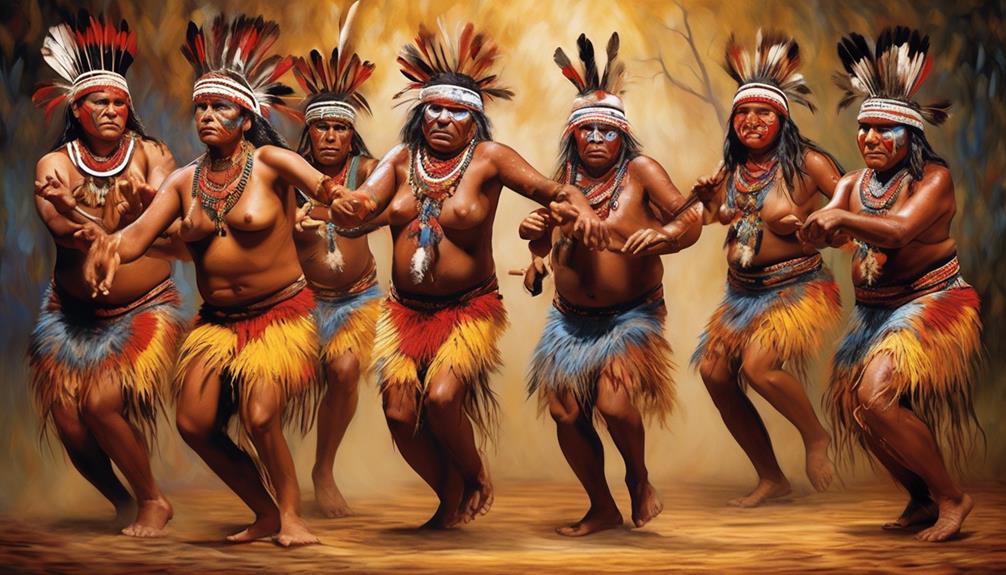
As we embrace the topic of cultural diversity within Aboriginal communities, it becomes evident that traditional practices, language, and art play a significant role in shaping the identity of each group.
Comparing the various practices and art forms across different Aboriginal communities offers a rich tapestry of cultural expression and heritage.
Contextually, the preservation of language and traditional practices reflects the resilience and richness of Aboriginal cultures across different regions.
Traditional Practices
Drawing on centuries-old customs and rituals, the Aboriginal community preserves and passes down traditional practices that reflect their cultural diversity. These practices aren't only a means of cultural preservation but also embody sustainable living, creating a harmonious relationship with the environment.
The intergenerational knowledge transfer within the community ensures that these traditions remain vibrant and relevant, fostering a deep sense of connection to their ancestors and the land.
Community engagement plays a pivotal role in upholding these traditional practices, allowing for the exchange of ideas and the celebration of diverse customs.
Through traditional practices, the Aboriginal community showcases a profound understanding of the interconnectedness of all living things, offering valuable insights into sustainable living for the benefit of present and future generations.
Language and Art
Preserving and passing down traditional practices that reflect our cultural diversity, the Aboriginal community also cherishes its language and art as integral components of our rich heritage.
Language preservation is paramount, as it holds the essence of our identity, encapsulating millennia of wisdom and knowledge.
Our traditional storytelling, conveyed through oral traditions and now in written form, serves as a profound link to our history, values, and spirituality.
Indigenous artwork, with its vibrant colors and intricate designs, not only captivates the eye but also carries deep cultural symbolism, conveying stories of creation, connection to the land, and ancestral knowledge.
Through language and art, we continue to celebrate and perpetuate our cultural diversity, ensuring that our heritage remains alive and thriving, a testament to our enduring spirit and resilience.
Global Perspectives
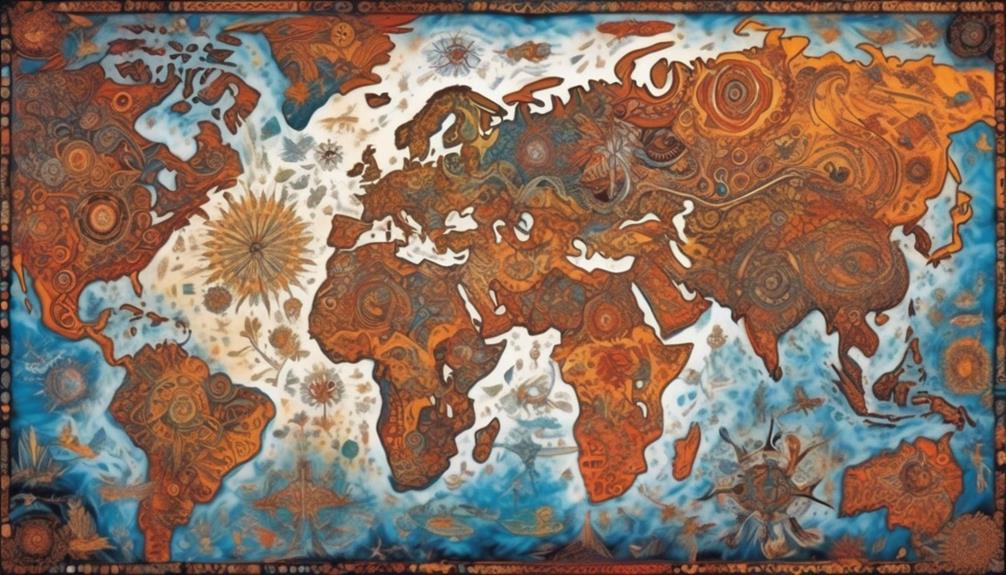
From our global perspective, the traditional practices and cultural significance of the Aboriginal people offer valuable insights into the interconnectedness of humanity and the natural world.
- Indigenous perspectives emphasize the deep connection between humans and the environment, recognizing the importance of living in harmony with nature. This worldview challenges the dominant Western perspective and offers a holistic approach to understanding our place in the world.
- Cultural preservation is central to Aboriginal communities, serving as a reminder of the rich tapestry of human existence and the diversity of cultural expressions. This preservation is a testament to the resilience and determination of indigenous peoples in the face of historical oppression and ongoing challenges.
- Global recognition of indigenous rights is an essential step towards acknowledging the injustices that have been perpetrated against Aboriginal communities worldwide. It calls for the restoration of autonomy and self-governance, as well as the protection of cultural heritage and sacred lands.
- The Aboriginal experience provides a lens through which we can critically examine our own societal structures and values, prompting us to question the impact of globalization and modernization on indigenous communities. This critical reflection encourages a reevaluation of our relationship with the natural world and the ways in which we interact with diverse cultures and traditions.
Traditional Territories
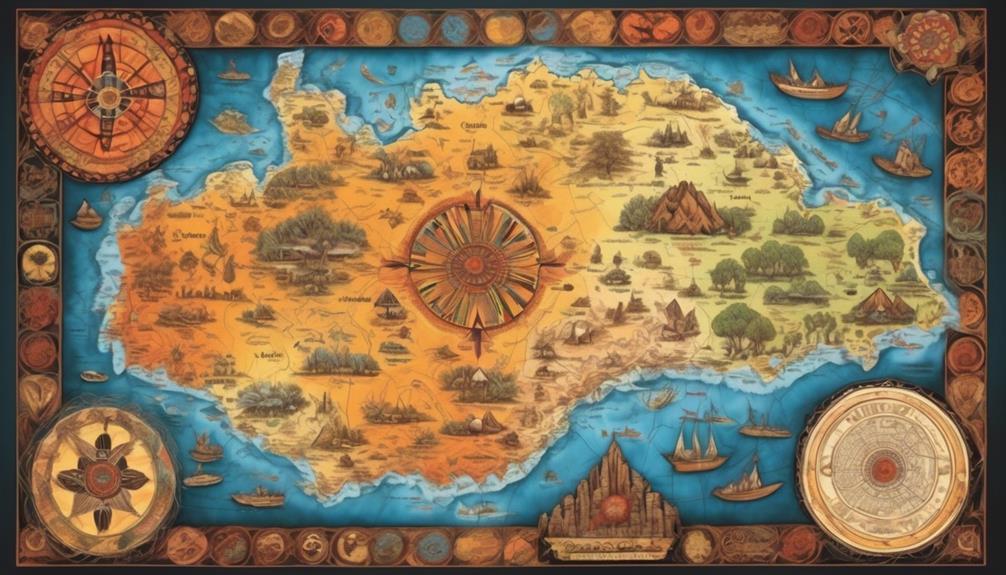
As we explore the concept of traditional territories, we see the intricate connection between land ownership rights, cultural significance, and resource management.
In many indigenous communities, the land holds deep spiritual and historical importance, shaping their identity and way of life.
Understanding these traditional territories is crucial for respecting and preserving indigenous cultures and fostering meaningful relationships with these communities.
Land Ownership Rights
The traditional territories of Aboriginal communities are fundamental to their cultural identity and sustenance, serving as the foundation for their land ownership rights. Our connection to the land goes beyond legal ownership; it's deeply rooted in our heritage and spirituality.
- Land rights aren't just about possession but about sovereignty, acknowledging our inherent authority over our territories.
- Indigenous perspectives on land ownership prioritize stewardship and sustainability, viewing the land as a living entity that must be preserved for future generations.
- Conservation efforts are guided by traditional ecological knowledge, recognizing the interconnectedness of all living beings and the land.
- Our struggle for land rights is a fight for self-determination and the ability to govern our territories in ways that align with our values and traditions.
Cultural Significance
Deeply embedded in our cultural heritage, our traditional territories hold profound significance, shaping our identity and way of life. These territories are not just physical spaces; they are the embodiment of our history, spirituality, and interconnectedness with the land. The table below illustrates the diverse cultural significance of traditional territories for different Aboriginal communities, highlighting the importance of cultural preservation and community empowerment.
| Aboriginal Community | Cultural Significance | Community Empowerment |
|---|---|---|
| First Nation | Ancestral connection, sacred sites, hunting grounds | Land management, cultural education, self-governance |
| Inuit | Ice and snow traditions, survival skills, storytelling | Co-management agreements, language revitalization, art |
| Métis | Bison hunting, fiddle music, Red River cart | Cultural tourism, economic development, political advocacy |
Understanding the multifaceted significance of traditional territories is crucial for fostering cultural preservation and community empowerment.
Resource Management
Embedded in the cultural significance of traditional territories is the crucial aspect of resource management, which plays a vital role in sustaining our communities and preserving our heritage.
Traditional practices, land management, resource conservation, and sustainability practices are integral to our resource management. Our traditional practices are deeply rooted in the sustainable use of natural resources, ensuring that we maintain a delicate balance with the environment.
Land management involves not only utilizing the resources but also preserving the land for future generations. Resource conservation is a priority, and we employ various methods to ensure the sustainability of our resources.
Our sustainability practices are based on the understanding that the health of our communities is intricately linked to the health of our traditional territories, and we strive to manage our resources in a manner that reflects this interconnectedness.
Self-Government Rights
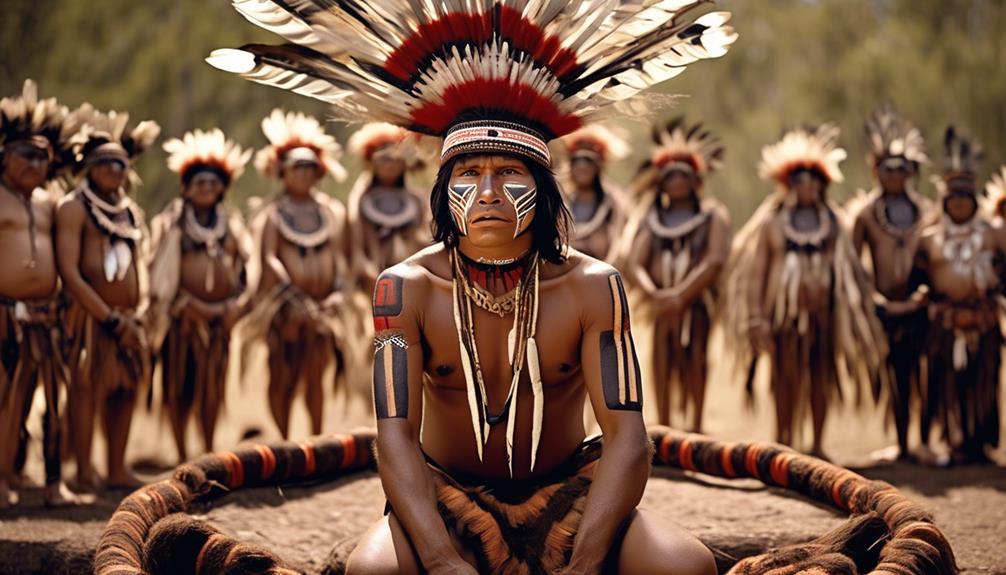
Although some Indigenous groups have achieved self-government rights, many are still working towards securing this essential autonomy. The ability to govern ourselves and make decisions that directly impact our communities is a fundamental aspect of self-determination. For some Indigenous communities, self-government rights have provided the opportunity to develop governance structures that are more reflective of our cultural values and traditions, leading to increased community empowerment. However, there are still many challenges and barriers that prevent other Indigenous groups from fully exercising their right to self-government.
| Challenges | Opportunities |
|---|---|
| Limited funding for self-governing Indigenous communities | Greater control over resource allocation and management |
| Inadequate political representation at higher levels of government | Ability to enact laws and policies that align with cultural values and traditions |
| Complex negotiations with federal and provincial governments | Increased autonomy and decision-making power within our communities |
The disparity in the implementation of self-government rights among Indigenous groups highlights the need for ongoing advocacy and support for all communities seeking self-determination. It is crucial to address the systemic barriers that hinder the full realization of self-government rights and to ensure that all Indigenous peoples have the opportunity to govern themselves in a manner that honors their unique cultural identities. The journey towards self-government is an essential part of the broader struggle for liberation and sovereignty.
Colonial Impact
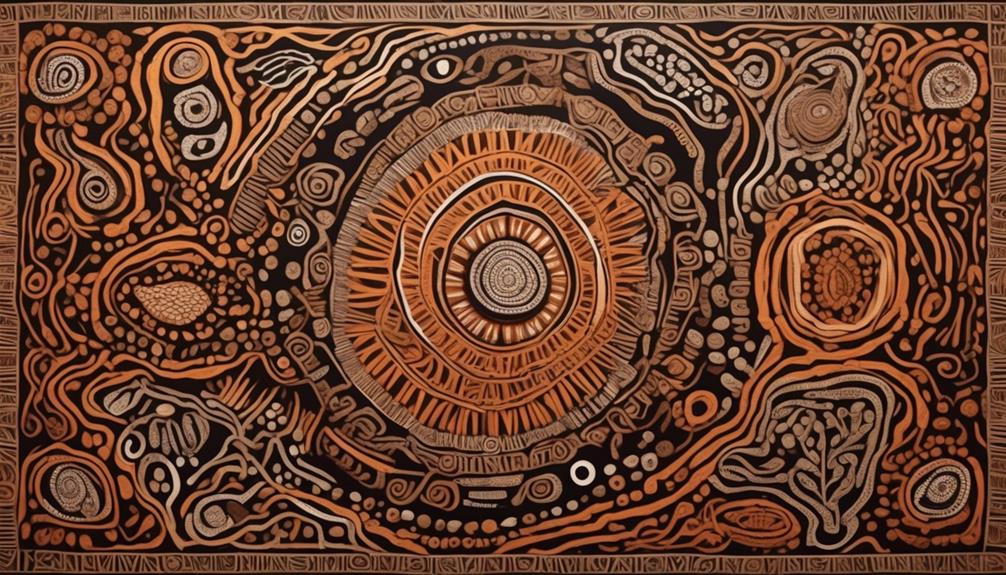
As we examine the colonial impact on Aboriginal communities, it becomes evident that the historical oppression and cultural erasure have had lasting and profound effects.
The comparison between the pre-colonial and post-colonial eras highlights the stark contrast in the autonomy and cultural preservation of Indigenous peoples.
The contextual understanding of colonial impact is crucial in recognizing the ongoing struggles and resilience of Aboriginal communities in the face of historical injustices.
Colonial Oppression
During the colonial period, the indigenous peoples experienced systematic oppression and dispossession of their lands and resources. This had profound psychological impacts, leading to intergenerational trauma that continues to affect our communities today.
The resilience of our ancestors is evident in the resistance movements and cultural revival that have emerged, serving as a source of strength and inspiration for our ongoing struggle for justice and liberation.
Despite the enduring effects of colonial oppression, we've persevered and revitalized our traditions, languages, and spiritual practices. The legacy of colonialism is a painful reality, but it has also sparked a powerful reclamation of identity and a renaissance of indigenous knowledge and pride.
Our journey toward healing and empowerment is a testament to the indomitable spirit of our people.
Cultural Erasure
Amidst the colonial impact, our cultural heritage has been systematically erased, leaving deep wounds that continue to shape our communities today. The intentional erasure of our traditions, languages, and belief systems has led to a loss of identity and belonging.
Cultural assimilation policies enforced by colonial powers sought to eradicate our way of life, leaving a legacy of trauma and disconnection from our roots. Despite these challenges, there's a growing movement towards cultural preservation and revival. Our communities are reclaiming traditional practices, revitalizing languages, and fostering cultural resurgence.
This revival isn't just about the past; it's a powerful act of resistance and resilience, shaping a future where our cultural heritage is celebrated and woven into the fabric of our existence. This journey of reclaiming our cultural identity is a fundamental part of our liberation.
Contemporary Challenges

One of the most pressing contemporary challenges facing Aboriginal communities is the preservation of traditional languages and cultural practices in the face of modernization and globalization. This challenge is complex and multifaceted, impacting the very essence of Aboriginal identity and heritage. As we navigate this critical issue, several key factors come into play:
- Language Revitalization: Many Aboriginal languages are at risk of extinction as fluent speakers decrease in number. Efforts to preserve and revitalize these languages are crucial to maintaining cultural heritage and knowledge.
- Cultural Transmission: The rapid changes brought about by modernization and globalization make it increasingly difficult for younger generations to fully engage with and understand traditional cultural practices. Finding effective ways to pass down these customs and rituals is essential for cultural preservation.
- Land Rights and Resources: The ongoing struggle for land rights and access to traditional resources poses a significant challenge to preserving Aboriginal cultures. These resources are deeply intertwined with cultural practices and spirituality.
- Socioeconomic Pressures: Socioeconomic disparities and marginalization create barriers to preserving cultural practices. Economic challenges can make it difficult for communities to prioritize cultural preservation amidst pressing everyday concerns.
Navigating these contemporary challenges requires innovative solutions and collaborative efforts that honor the rich cultural tapestry of Aboriginal communities while embracing the opportunities and advancements of the modern world.
Socio-Economic Indicators

We've noticed that income disparities and access to education are two key socio-economic indicators that deeply impact Aboriginal communities. When we compare these indicators to the broader population, we see significant disparities that reflect systemic challenges.
These disparities can have lasting effects on the well-being and opportunities available to Aboriginal individuals and communities.
Income Disparities
In examining income disparities among Aboriginal communities, it becomes evident that socio-economic indicators play a crucial role in shaping the financial landscape for these populations.
- Wealth distribution within Aboriginal communities often reflects historical injustices and systemic barriers, resulting in a significant wealth gap compared to the general population.
- Economic inequality is pronounced, with Aboriginal households experiencing lower median incomes and higher rates of poverty compared to non-Aboriginal households.
- Access to quality education and employment opportunities is limited, contributing to persistent income disparities within Aboriginal communities.
- Discriminatory practices in the workforce and unequal access to resources further perpetuate income gaps, impacting the overall well-being of Aboriginal individuals and families.
These disparities underscore the pressing need for targeted policies and initiatives aimed at addressing systemic economic inequalities and fostering equitable opportunities for Aboriginal communities.
Education Access
Unfortunately, limited access to quality education perpetuates the socio-economic disparities experienced by Aboriginal communities. Funding disparities between Aboriginal and non-Aboriginal schools contribute to the unequal educational attainment. This divide hinders the ability of Aboriginal students to reach their full potential and perpetuates the cycle of poverty within these communities.
Additionally, the lack of culturally relevant education further exacerbates the issue, as it often leads to disengagement and higher dropout rates among Aboriginal students. Moreover, the preservation of Aboriginal culture and language revitalization are crucial components of education access. When Aboriginal languages and cultural practices are integrated into the curriculum, it not only fosters a sense of identity and pride but also enhances the overall educational experience for Aboriginal students.
Addressing these disparities is essential for creating a more equitable future for Aboriginal communities.
Language and Communication
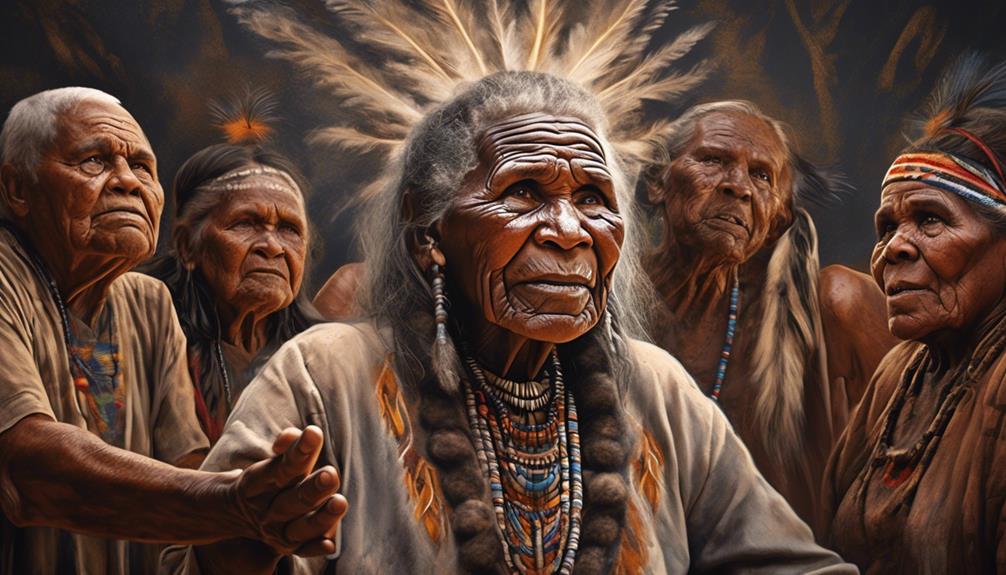
Language and communication play a central role in the Aboriginal definition of culture and identity. Our language isn't just a means of communication; it embodies our history, values, and worldview. It's a vessel through which our ancestors' wisdom and knowledge have been passed down through generations.
In the context of language and communication, we observe the following:
- Language revitalization, cultural preservation: Many Aboriginal communities are actively engaged in language revitalization efforts to reclaim and preserve their native languages. This is crucial for the preservation of our cultural heritage, as language is intrinsically tied to our identity. Through language revitalization, we seek to ensure that future generations can connect with their roots and uphold their traditions.
- Oral traditions, storytelling techniques: Our oral traditions and storytelling techniques are integral to the way we communicate and pass on knowledge. Through storytelling, we transmit our history, cultural values, and spiritual beliefs. These oral traditions foster a deep sense of community and belonging, reinforcing our cultural identity.
- Cultural diversity and linguistic variation: Aboriginal languages are incredibly diverse, reflecting the rich tapestry of our cultures. Each language encapsulates unique perspectives and ways of understanding the world. Embracing this linguistic diversity is vital for recognizing and celebrating the distinctiveness of each Aboriginal group.
- Challenges and resilience: Despite the challenges posed by colonization and forced assimilation, many Aboriginal communities are resiliently striving to reclaim, revitalize, and celebrate their languages. This resilience is a testament to the enduring strength of our cultural identity.
Our languages aren't just a means of communication but the very essence of our cultural identity, connecting us to our ancestors and guiding us into the future.
Art and Expression
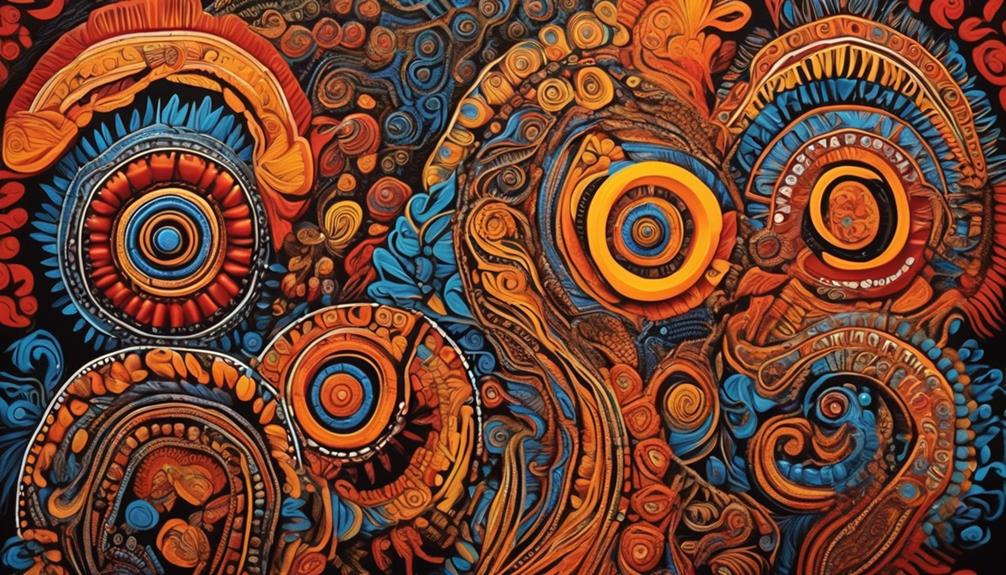
Art and expression serve as powerful mediums through which Aboriginal cultures convey their stories, traditions, and spiritual beliefs, embodying the essence of our identity and heritage. The artistic representation within Aboriginal communities is deeply rooted in cultural symbolism, reflecting the interconnectedness of the land, spirituality, and ancestral knowledge.
When examining our art forms, such as intricate dot paintings, wood carvings, or ceremonial body paintings, we recognize how each stroke, color, and motif carries profound meaning, encapsulating our lived experiences and understanding of the world.
Comparatively, the diverse artistic traditions across Aboriginal groups showcase unique regional styles and interpretations, yet all share a common thread of preserving and sharing cultural narratives. Our art and expressions not only serve as a means of storytelling but also as a form of resistance against historical oppression and a reclamation of our identity. Through art, we assert our presence, resilience, and connection to the land, challenging dominant narratives and reclaiming our space in the world.
Contextually, the significance of art and expression in Aboriginal cultures extends beyond mere aesthetics. It's a living embodiment of our cultural resilience and a testament to the richness of our heritage. By embracing our artistic traditions, we reclaim our agency in shaping the narrative of our people, fostering a sense of empowerment and liberation. In doing so, we celebrate the beauty of our diversity and reaffirm the enduring legacy of our ancestors.
Spiritual Beliefs

Embedded within our cultural practices and traditions, spiritual beliefs play a foundational role in shaping our worldview and guiding our interconnectedness with the natural and spiritual realms. Our spiritual beliefs are deeply rooted in our identity and are integral to our understanding of the world around us. They provide a framework for our relationship with the land, the elements, and all living beings. Our spiritual beliefs aren't confined to a specific place or time; rather, they permeate every aspect of our lives, influencing our actions, decisions, and interactions with others.
- Connection to the Natural World: Our spiritual beliefs emphasize the interconnectedness of all living things and the importance of living in harmony with nature. This interconnectedness is central to our understanding of spirituality and guides our interactions with the natural world.
- Shamanic Practices: Within our spiritual beliefs, shamanic practices hold a significant place. Shamans play a vital role in our communities, serving as intermediaries between the human and spirit worlds. They facilitate healing, provide guidance, and maintain balance within our communities.
- Ritual Ceremonies: Ritual ceremonies are an essential part of our spiritual practices, serving as occasions for honoring the land, ancestors, and spiritual beings. These ceremonies are a way for us to express gratitude, seek guidance, and maintain our connection to the spiritual realm.
- Holistic View of Health: Our spiritual beliefs encompass a holistic view of health, recognizing the interconnectedness of the physical, emotional, and spiritual aspects of well-being. Ritual ceremonies and shamanic practices often play a role in promoting health and healing within our communities.
Environmental Stewardship

Our deep connection to the natural world guides our role as stewards of the environment, shaping our actions for the benefit of future generations. Traditional practices deeply rooted in our Indigenous identity have long emphasized environmental sustainability and land preservation. Our approach to environmental stewardship is holistic, considering the interconnectedness of all living beings and the land itself. We view the environment not merely as a resource to be exploited, but as a vital and sacred part of our existence.
Comparatively, our traditional practices often stand in stark contrast to modern Western approaches to environmental sustainability. While the dominant culture often prioritizes short-term gains and economic growth, our focus lies in the long-term health and balance of the natural world. Our stewardship isn't solely about managing resources, but about fostering a reciprocal relationship with the environment, understanding that our well-being is intrinsically linked to the health of the land.
Contextually, our environmental stewardship is embedded within our cultural and spiritual beliefs. It isn't a separate or distinct role, but an inherent part of our way of life. The protection and preservation of the land aren't just actions we take, but an expression of our identity and values. Our understanding of environmental stewardship isn't just about the physical act of preservation, but about maintaining the spiritual and cultural connections that bind us to the land for generations to come.
Recognition and Reconciliation
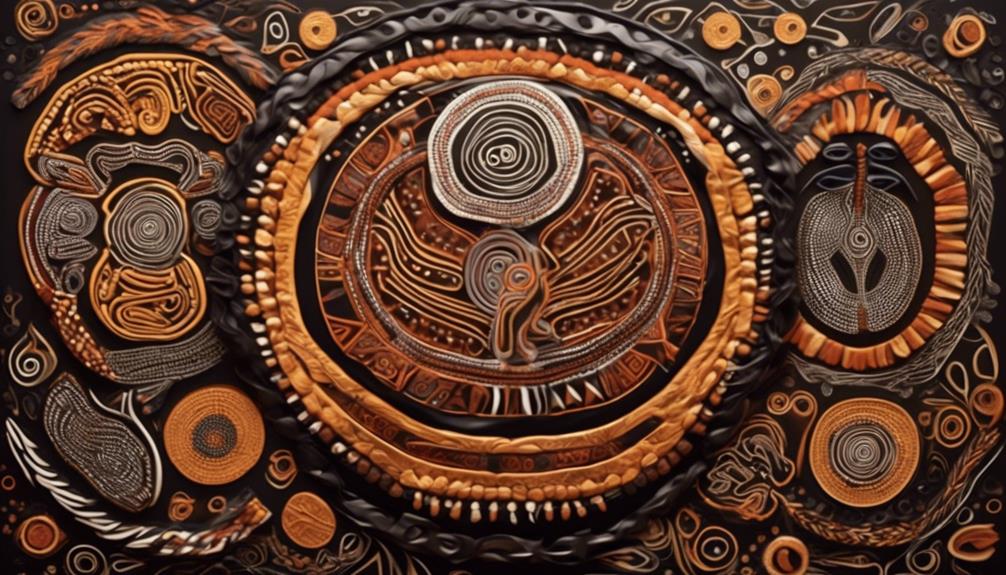
Recognition and reconciliation are vital steps in acknowledging historical injustices and fostering healing and understanding within our communities. As we delve into the significance of recognition and reconciliation, it's essential to acknowledge the impact of these processes on cultural diversity and the revitalization of traditional practices.
Recognition is the first crucial step towards healing and understanding. It involves acknowledging the historical injustices and the enduring impacts on Indigenous communities. By recognizing the past, we validate the experiences of Indigenous peoples and pave the way for meaningful reconciliation.
Reconciliation is a multifaceted process that involves building respectful relationships and addressing the ongoing impacts of colonization. It requires active participation and engagement from all members of society to create a more inclusive and equitable future.
Cultural diversity thrives when recognition and reconciliation are embraced. It allows for the celebration of Indigenous cultures, languages, and traditions, enriching the tapestry of our society.
Revitalization of traditional practices is empowered through recognition and reconciliation. It provides opportunities for Indigenous communities to reclaim and preserve their cultural heritage, passing it on to future generations.
As we navigate the complexities of recognition and reconciliation, it's imperative to approach these processes with humility and openness. Embracing recognition and reconciliation fosters a society where all voices are heard, valued, and respected.
Frequently Asked Questions
How Have Modern Aboriginal Communities Adapted to Contemporary Technology and Globalization?
We've seen modern Aboriginal communities adapt to contemporary technology and globalization by incorporating these advancements within our cultural preservation efforts, enhancing economic participation, and sharing traditional knowledge.
Technology has facilitated connections and enabled us to maintain our cultural identity while participating in the global economy.
We've leveraged our traditional knowledge to navigate the challenges and opportunities brought by globalization, ensuring that our heritage remains a vital part of our modern existence.
What Are Some Common Misconceptions About Aboriginal Spiritual Beliefs and Practices?
Misunderstandings and misinterpretations often cloud the public's perception of Aboriginal spiritual beliefs and practices. These misconceptions stem from a lack of exposure and understanding of the rich and diverse traditions within Aboriginal communities.
It's crucial to challenge these stereotypes and seek to understand the complexities and nuances of Aboriginal spirituality. By doing so, we can begin to break free from the limitations of these misconceptions and embrace a more inclusive and enlightened perspective.
How Do Aboriginal Communities Address Environmental Challenges and Promote Sustainable Practices?
We see environmental stewardship as a core value in Aboriginal communities. Sustainable development is achieved through traditional practices and innovative solutions.
Our approach to addressing environmental challenges involves a deep connection to the land and a commitment to preserving it for future generations. We observe a harmonious balance between human activity and nature, emphasizing the importance of sustainable practices in maintaining ecological integrity.
What Efforts Are Being Made to Recognize and Reconcile the Historical Injustices Experienced by Aboriginal Peoples?
Efforts to recognize and reconcile historical injustices experienced by Aboriginal peoples have gained momentum.
Recognition of past wrongs and efforts to make amends through various initiatives highlight the ongoing commitment to reconciliation.
Historical injustices are being acknowledged and addressed, paving the way for healing and understanding.
The journey towards recognizing and reconciling these injustices is instrumental in building a more inclusive and equitable society.
How Do Aboriginal Communities Navigate the Complexities of Maintaining Cultural Traditions While Also Participating in the Modern Economy?
We observe that many aboriginal communities navigate the complexities of maintaining cultural traditions while participating in the modern economy.
Traditional practices are upheld alongside economic participation, demonstrating a commitment to cultural preservation.
Communities are adapting to globalization while safeguarding their heritage.
This balancing act reflects a desire for liberation, as aboriginal peoples strive to thrive in the modern world while honoring their rich cultural traditions.
Conclusion
As we reflect on the diverse and rich tapestry of Aboriginal definitions, we can't help but wonder: how can we continue to honor and support indigenous communities around the world?
Through recognition and reconciliation, we can work towards a future that respects and celebrates the cultural heritage and contributions of Aboriginal peoples.
It's a journey of understanding and solidarity, one that requires us to listen, learn, and stand in solidarity with indigenous voices.
